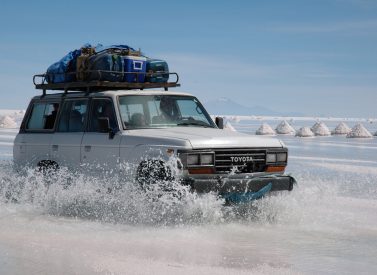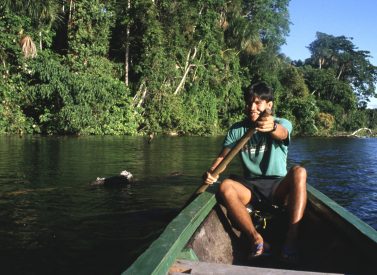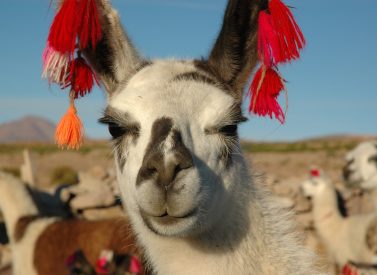
Bolivia Highlights two week tour
See the best places in Bolivia
Explore Bolivia’s highlights on our two-week small group tour around this wonderful Andean country.
On this guided tour you visit Bolivia’s highlands, where the landscape and culture is as varied as any in South America.
We journey to the famous cities of Potosi, Sucre and of course the Salar de Uyuni salt flats. We then move on to La Paz and the emblematic Lake Titicaca.
More on Bolivia Highlights tour
You start your trip in the city of Santa Cruz (or alternatively you can start in La Paz) then head to the beautiful colonial city of Sucre.
In Sucre you visit nearby indigenous markets, and can shop for stunning traditional weavings.
From Sucre we continue to the colonial mining city of Potosi with its fascinating yet harsh history.
Onwards next to enjoy and experience the vast Uyuni Salt Flats on a four wheel drive adventure among some of the world’s most incredible scenery.
Visit La Paz and Lake Titicaca
The action continues as we visit the world’s highest capital, La Paz, admire its dramatic setting amidst snow-capped peaks and haggle at the colourful witches’ market.
We finish with a tour to the mystical Lake Titicaca, from where the Inca Empire is believed to have emerged.
If you choose you can extend your trip by a few days to relax in the hot springs of Sajama National Park, or head to the nearby Condoriri National Park for high altitude hiking.
For those looking for some off the beaten track adventures there’s Toro Toro National Park and well worth a visit for superb wildlife is the Bolivian Amazon.
Trip Highlights
Print Share Download as PDF-
Explore the highland colonial cities of Sucre and Potosi, famous for their architecture and heritage.
-
Take a 4wd tour across the vast salt flats and enjoy the lunar type coloured desert landscapes of southern Bolivia.
-
Watch the sunrise over the vast shimmering high altitude Lake Titicaca, the brave can enjoy a dip in the chilly waters, with ice-covered peaks of the Cordillera real beyond.
-
Explore the worlds's highest capital city, La Paz. The city has many colourful local markets and a new network of cable cars.
-
See the lowland city of Santa Cruz gateway to Bolivia's low lying pampas and remote national parks.
-
There are several options for ways to extend the tour by adding a trip to the wildlife-rich Amazon rainforest, or go high and tackle a 6,000 metre peak.
The whole trip was very interesting, and organisation was very good. Their guides were all very knowledgeable and helpful, and no complaints about any of the hotels.
We were glad we added the Sajama extension - that was one of the most interesting parts of the trip.
Overall it's a well-thought out trip, and you definitely get to see a lot of the country. The place is fascinating - I think any geologist visiting Bolivia would be in heaven - and certainly lived up to expectations, especially the salt flats.
P. Powell, Bolivia tour
Full Itinerary
Day 1: Fly to Santa Cruz, arrival transfer to hotel (B)
Today you arrive in Santa Cruz, where you will be met at the airport and transferred to your hotel.
Santa Cruz is an ideal starting point for any Bolivia holiday as it lies at lower altitude and welcomes with a very warm climate.
Alternatively fly into La Paz and we start the tour from there.
Day 2: City Tour Santa Cruz, free time in afternoon, hotel (B)
Many say Santa Cruz is the most diverse of Bolivian cities and while it is of considerable size, it has still managed to retain a laid-back small town feel.
Today we will explore the city and its narrow city centre streets with our guide in the morning, before having time to soak up the atmosphere on our own in the afternoon.
Day 3: Fly to Sucre, transfer to hotel. City tour in afternoon (B)
Today you fly to the beautiful city of Sucre, UNESCO world heritage city and constitutional capital of Bolivia.
After checking into your hotel a half-day tour of the city awaits in the afternoon, which shows you the most important monuments such as Casa de la Libertad, the beautiful baroque cathedral and several other churches in the old city (including two museums), you have the evening to experience the vibrant restaurant and pub scene of this dynamic city.
Day 4: Free day Sucre, hotel (B)
There is plenty to do and see in Sucre so we suggest you spend a day to do just that.
You can choose to have a day on your own, or we can arrange optional tours for you, such as a visit to see the nearby dinosaur footprints, a visit to the traditional and beautiful Tarabuco Market (Sunday only) or the diverse community project of Jatum Yampara where you can see the traditional way of life in rural communities and learn about weaving, llama herding and the challenges the community faces today.
Day 5: Bus to Potosi, transfer to hotel. Free time (B)
Today we board the public bus to Potosi (four hours on road, 100% asphalt). On arrival we check into our hotel, and have the rest of the day to explore the city.
The “Rich Mountain” that overlooks Potosí is the main source of silver in the area and the mining industry has shaped the city.
We have left the afternoon free for you to explore but can arrange optional tours.
A visit to the Casa de Moneda gives a fascinating insight into the world of silver and coin production that brought riches to the city in the times of the Spanish Conquistadores.
Or if you are interested in learning more about Potosi’s silver mines today, you can choose to visit a mine – but we would like to highlight that visits to the mines are not well regulated in terms of safety and conditions are very crammed and basic, so do ask us for more details if you’d like to go.
Day 6: Bus to Uyuni, transfer to hotel (B)
Time to climb to yet higher altitudes as we get the bus to the remote town of Uyuni.
Roads are surfaced and the changing scenery will make the 4-hour bus ride pass quickly, with plenty to look at. On arrival you will be met and taken to your hotel.
Day 7: 4x4 tour of Salar de Uyuni, Tayka Salt Hotel (B,L,D)
At 10:00am we’ll start an unforgottable journey through 12.000Km2 of fantastic landscapes of salt. Prepare your camera! The dazzling white mantle of the Uyuni Salt Flat (or Thunhupha) resembles an immense glacier.
In the winter (dry season, from May to October), when the surface hardens, geometrical formations start appearing formed by salt particles conglomerating into polygons.
In summer (rainy season, November to February), the saline desert transforms into a gigantic mirror that melts into the purest sky in America.
We enter the salt flat through Colchani, where we can find the salt factories. We visit one of these and receive an explanation of the family economy of the salt which governs the life of the people on the basis of a cooperative organisation.
Once we end this part of the trip we will visit the salt plains in the part in which the mounds of salt are recollected, from here we will head towards the Incahuasi Island, the tourist centre that has a path to climb to the summit which acts as a special vantage point of 360 degrees.
We’ll have a box lunch at the island and then we’ll head toward the dominant and magic figure of the Volcano Thunupa whose slopes will let us visit the Chantani Museum, with its ceramic sample, in capricious ways of stone that resemble to animals and its silent mummies that refer the old burials in these lands.
Almost immediately departure by car to the town of Chillguilla at north, where we’ll start the climb to the Pucara. We’ll walk for 20 minutes climbing to the impressive site of Pucara Chillima. It is an intimate corner of the Sensual Salt Flat, of incomparable beauty, but also a spiritual presence that emanates from the stone buildings of more than thousand years old, that make us think about the ancestral populations’ way of living.
Return to Tayka Salt Hotel which offers us private bathrooms, hot water and heating.
Day 8: 4x4 tour of Salar de Uyuni, Tayka Desert Hotel (B,L,D)
Today we focus on the lesser known and visited parts of the Salt Flat.
We head by 4×4 to Chiquini, making a stop in a lonely Ojo de Agua (Water Eye) then continue toward “The Cathedral”, a huge cliff facing the Salt Flat and very near the Chiquini Cave.
Here there are strange geological underwater formations, from de time of Lake Michin (300,000 years ago) and Lake Mauca (40, 000 years ago).
Next we have the privilege of crossing from north to south, the most beautiful part in the white desert, far from the usual route of the tourists. We head towards the bay of the Campanas Islands, dominated by the image of the Volcano Caltama.
We leave the salt flat and head to Charagua, a pretty place of corals and goat farmers. It will take us one hour, via a bumpy road, to arrive to the Burnt Town of San Pedro de Quemes, where we will leave the car to go through its small streets and view the buildings whic have inspired the hotel Tayka of Stone.
We take lunch in the Hotel of Stone (optional Shepherding of Llamas trip, spending an hour or so helping a shepherd or shepherdess with the llamas, a vital part of life in the Salar).
In the afternoon we will go toward the lagoons – Cañapa, Hedionda, Chiarkota, Honda and Ramaditas, replete with flamingos happy to be photographed!
Other birds, such as Andean gulls and ducks, accompany the flamingos in these lagoons, which are flanked by snow-capped volcanoes.
Next we enter the deserts of sand. These fantastic deserts are owners of the whole palette of terracottas. Red, oranges, ochers, coffees and beige – every bend in the road there are more colours, fighting for your attention. In front of the most impressive of these palettes of colours is the Hotel Tayka of the Desert, with private bathrooms, hot water and environmental heating waiting for us.
Day 9: 4x4 tour of Salar de Uyuni. Return to Uyuni, hotel (B,L)
An early start today at 05.30 o’clock, towards the Eduardo Avaroa and Flora and Andean Fauna Reserve and then the famous Stone Tree.
Next to the Red Lagoon to observe its great population of flamingoes, then the Morning Sun Geysers to catch them in their active moments.
This will be the highest point in the route, nearly 5,000m/16,404ft.
Here, noisy fumaroles and puddles make the earth seem to boil in reddish, grizzly, scarlets mud.
The desert and salt flat of Chalviri is another superb scene. It combines the white of the snow, the ochre of the desert, the blue of the water, and, in one of its corners, we can to take a dip in the hot springs of Polques.
It is a day full of highlights, as next is Ladies of the Desert, a masterpiece created by the the wind and the Andean peaks around, with crazily shaped rocks in fantastic colours, all moulded by the winds. Furthermore, nearby is the Green Lagoon, at the foot of the Volcano Licancabur, another pearl of the reserve.
From the Green Lagoon we return to the Red Lagoon, have lunch, and then watch as the shifting sun helps to change its colour from a woody red blood red colour.
We return via Villa Mar to Uyuni, and the tour ends with a night at our hotel.
Day 10: Fly to La Paz. Arrival transfer to hotel. Afternoon walking city tour (B)
A flight awaits and we finally touch down in the bustling city of La Paz – after checking in at the hotel we have a guided tour of the city in the afternoon.
Instead of exploring the main tourist areas however, we prefer to take you a little bit off the beaten track and take you on a tour of a different kind. Exploring life of the communities of El Alto, visiting local markets, learning about the traditions of the indigenous Cholitas and hopping on the transport locals travel with every day.
Afterwards you have a real insight into life of the diverse population of Pazenos.
Day 11: Lake Titicaca, visit Sun Island, hotel in Copacabana. (B)
You join a group today (or alternatively we can arrange this in private for you, please ask) for a trip to the stunning Lake Titicaca.
We travel to the town of Copacabana, located on the shores of the lake at 3,810m/12,500ft above the sea level.
To get here you cross the strait of Tiquina which is the narrowest part of the entire lake, dividing the lake in two: the small section known as Wiñaymarka and the large section known as Chucuito.
From the bus you can see agriculture terraces built during the Chiripa, Tiwanaku and Inca civilisations.
Arrival at Copacabana and check in at your hotel.
In the afternoon we sail on a motor boat towards the southern part of the Sun Island, visit the Pilkocaina Temple and hike towards Yumani village enjoying great views of the Mountain Range of the Andes, walk downhill through the Fountain and the Inca Staircase.
Sail back to Copacabana and overnight in town.
Day 12: Return to La Paz, hotel (B)
This morning there is time to explore Copacabana.
Don’t forget to visit the renaissance style church where you will find the Patron Virgin Mary of Bolivia, the handicraft shops and the local product market.
You can also choose to hike up the “Calvary Hill” where you can see and understand the fusion of different religions in Bolivia.
After lunch we drive back to La Paz and arrive in the late afternoon.
Day 13: Transfer to airport, tour ends or choose an extension (B)
After a busy and diverse two weeks in this beautiful country it is time to say farewell as we take you to the airport for your flight back.
Of course, those with a little more time can explore a little further. Do ask us for possible extensions to your trip.
Prices From $2,728 / £2,218 per person
What's Included?
Local English speaking guides for local tours, all tours and excursions are shared, transport in public or private vehicle as mentioned, meals as mentioned (B=b’fast, L=lunch, D=dinner), entry fees for sights/ national parks included in programme.
What's Not Included?
International and domestic flights (we can arrange these), airport tax, travel insurance, drinks and personal belongings, tips, alcoholic or soft drinks
Accommodation
We use 2-3* hotels in towns and cities, with hot showers and private bathrooms.
Salar de Uyuni – we use hotels made of salt with private rooms and bathrooms.
Tour Staff
You will meet bilingual, English-speaking guides as you move around from site to site (tour leader available at extra cost).
They are qualified Bolivian guides and will bring provide you with all the local timings and information.
Meals
Vegetarians and many other dietary requirements are catered for without problems. Please let us know in advance of any requirements you have.
Towns and cities
There are a wide variety of eateries in towns and cities, from chicken and chips or burgers to more traditional fare. Quinoa, rice, potatoes and meats all feature heavily, as do soups.
Salar de Uyuni
Meals are provided at hotels – breakfasts usually involve hot drinks, coffee, juice, toast, eggs and fruits. Lunch will either be sandwiches and snacks (if on the road) or a soup with a main meal of rice/pasta.
Dinner usually consists of a soup to start and then a main of rice, pasta, mashed potato etc. Note that Uyuni remains a very remote area and sometimes choice is limited.
Lake Titicaca
Here, fish, fruit and rice play a larger role in people’s diets, so you can expect to be served trout from the lake.
Copacabana town has more international type options.
Activity Level
There is no strenuous activity, but much of this tour takes place at high altitude.
We build in acclimatisation and the fitter you are, the more you will enjoy the trip. Several days involve half or full day tours and so you need to be comfortable with being on your feet and walking around for several hours.
There are some 4-6 hour bus journeys, too. Most buses in Bolivia do not have toilets.
Practical Information
An introduction to Bolivia
Land-locked Bolivia is a country of dramatic landscapes and fascinating native cultures and traditions.
The Altiplano or “High Plain”, averaging 3,800m, is its most populous region. The vast, luminous plateau is flanked to east and west by parallel Andean ranges.
La Paz, the world’s highest capital, lies in a deep canyon at the edge of the Altiplano, and at the foot of Illimani (6,400m). It is a striking city for its dramatic setting and its strong Indian character.
Lake Titicaca is the world’s highest navigable lake. It was sacred to the Incas; according to legend, their founding emperor-gods rose from these waters to give birth to their empire. Just south of the lake stands the sacred pre-Inca site of Tiahuanaco.
Vaccinations for Bolivia
We strongly suggest that everyone planning to travel to Bolivia visits their local doctor/travel clinic prior to departure for the latest vaccination information.
Recommended vaccinations
- Up-to-date diphtheria and polio.
- Tetanus or tetanus booster. (These three are effective for ten years.)
- ‘Havrix’ for Hepatitis A. The course of two injections protects you for ten years. Gamma globulin is cheaper butless effective.
- Typhoid vaccine is recommended by some doctors although it will not provide total protection and being careful about what you eat and drink is your best defence. It is given in two shots, four weeks apart and lasts for three years. Unless at exceptional risk, people over the age of 35 who have received four or more courses of typhoid immunisation need no more.
- A pre-exposure rabies vaccination is worth considering if you are going to be in contact with animals or morethan 24 hours away from a reliable source of vaccine. Hikers are at some risk from rural dogs, certain of which carry rabies, and those visiting coastal or rainforest areas could be exposed to rabid bats.
- Yellow fever. Not effective until ten days after inoculation; not recommended for pregnant women. This is also effective for ten years.
Malaria risk is present throughout the year in Bolivia’s Amazon areas.
Malaria risk also present in all areas below 2,500m and in the departments of Santa Cruz, northern Beni and Pando, especially in the localities of Guayaramerin and Riberalta.
- Anti-malarial protection. Bolivia has chloroquine-resistant strains of malaria and it is important that you follow the prophylactic regime carefully. In the UK, contact the Malaria Reference Laborator. North Americans should contact the Centers for Disease Control.
- Zika. Spread by mosquito bikes and also a risk of sexual transmission. People planning pregnancies / pregnant women are advised against all travel to areas reporting Zika. If you develop any feverish illness whilst travelling or on return medical attention must be sought quickly.
- Dengue Fever. There is no vaccine and prevention is through avoidance of mosquito bites. The mosquito that spreads dengue bites during the day and is more common in urban areas. Symptoms include fever, headache, severe joint, bone and muscular pain – hence its other name ‘breakbone fever’.
Kit list
Good kit is vital for every trip.
Book with Andean Trails and get 15% off Páramo’s fantastic ethical and high performance outdoor gear.
Overview
Bolivia has an incredibly local and varied set of weather systems, which means you need to be prepared for almost every eventuality.
When planning for these changeable climatic conditions you will encounter across Bolivia, layering is the most practical and versatile clothing system.
The sun is very strong throughout the country, so good sun cream, a hat and sunglasses are vital.
It can also get very cold at night time especially in the mountains and in cities like La Paz. Jumpers, fleeces and warms hats – which you can buy there – are also essential.
It can rain at any time, so always have a poncho/waterproof jacket handy.
Give plenty of thought to kit selection, and try to keep weight down.
Below is a more detailed guide.
Detailed kit list
- Medium weight parka or a down jacket.
- Waterproof jacket and trousers. The jacket needs to be water proof and roomy. Side-zip pants are recommended.
- 2-3 long-sleeve shirts – no cotton
- 2-3 short-sleeve T-shirts – no cotton
- 2 pair of hiking trousers- cotton or synthetic material (no jeans)
- 1 fleece or sweat trousers (for cold evenings)
- 2 pair hiking shorts
- Long thermals – synthetic or wool – light to medium weight top & bottoms.
- 2-3 mid-weight (wool or synthetic) socks.
- 2-3 liner socks if needed
- Athletic-type socks, several pairs, city use
- Hiking boots that are waterproof and well broken-in.
- Running/tennis shoes or sandals are very comfortable when you are in cities
- 1 lightweight wool sweater or windproof fleece
- 1 wool or synthetic warm hat.
- 1 light sun hat with a wide brim.
- 1 pair of medium-weight wool or synthetic gloves
- Broad-brimmed sunhat, essential.
- Sunglasses with UV filter.
- Scarf for cold.
- Bandanna – to protect neck from strong sun.
- Daypack (at least 30 litres). Comfortable and with waterproof lining or cover.
- Water bottle (2 litres approx.) & purification tablets.
- Personal first-aid kit to include: painkillers, plasters (band-aids), moleskin, anti-biotic cream, general antibiotics (ask your GP), after-bite (tiger balm), anti-diarrhoea tablets, throat lozenges, re-hydration salts & personal medication.
- Insect repellent (just in case)
- Towel & wash-kit.
- Wet Wipes/antiseptic hand-wash cream.
- Sunscreen (factor 30+) and lip salve.
- Head-lamp (plus spare bulb and batteries).
- Penknife.
- Travel alarm clock.
- Plastic bags – ‘Zip-loc’ & tough bin liners.
- Camera and film / memory cards (take at least twice the amount you think you will need!).
- Book, e-book, mp3 player/ipod or other to help pass the time.
- Binoculars.
- Spanish/English phrasebook.
- Extra snacks i.e. cereal bars or favourite chocolate bars.
Miscellaneous others
- Money belt.
- Passport.
- U.S. dollars cash, mixed-denomination notes, undamaged and unmarked.
- ATM cash/credit card.
- Any inoculation certificates.
- Personal & medical insurance certificates.
- Presents e.g. Postcards from home.
- Comfortable clothes for travel, smart clothes for night life.
Altitude
Being at altitude, especially in the tropics, is usually a pleasure as it isn’t so hot, there are few insects and the air is clear.
However, when gaining altitude, air pressure drops and the amount of oxygen reaching the lungs is reduced. Although we build plenty of acclimatisation time into our itineraries, certain ill-effects are possible. Nevertheless, all of these can be minimised or prevented if care is taken.
On reaching heights above 2,500m (approx. 8,200 ft), especially when ascent has been straight from sea level, heart pounding, mild headache and shortness of breath are normal, especially on exertion.
Acute mountain sickness (AMS) is a syndrome known locally as soroche, whose symptoms can include of bad headache, dizziness and nausea).
To avoid AMS, you should:
- Rest for a few hours on arrival at altitude and take it easy for the first couple of days. Note: you may feel fine on arrival and tempted to exert yourself as normal. Don’t be fooled: you might be benefiting from oxygen brought in your blood from sea level.
- Drink plenty of water to avoid dehydration (altitude is a diuretic). Coca tea (mate de coca) helps alleviate symptoms.
- Eat light meals, with high carbohydrate and low fat and protein content. Dine early, allowing digestion time pre-sleep.
- Avoid over-exposure to the strong highland sun (UV rays are very powerful) – especially in the early stages – making sure you wear a broad brimmed sunhat. Apply lip-salve to prevent chapped lips.
- Avoid or minimise consumption of cigarettes and alcohol. Avoid sleeping pills.
- If you do get AMS: Rest, take non-aspirin painkillers (for headache) and coca tea. Symptoms should subside after a day or two.
- Pregnant women, people with a history of heart, lung, kidney or blood disease or blood pressure problems, should consult their doctor before traveling to high altitude.
ATOL holiday protection
Andean Trails has 25 years of experience of putting together the best South America holidays.
We pay a fee to the CAA for every licensable passenger we book since we hold an Air Travel Organiser’s Licence granted by the Civil Aviation Authority. In the unlikely event of our insolvency, the CAA will ensure that you are not stranded abroad and will arrange to refund any money you have paid to us for an advance booking.
We also offer ATOL (Civil Aviation Authority) protected holidays to give our customers peace of mind when booking and travelling.
When you buy an ATOL protected air holiday package from Andean Trails Ltd you will receive a Confirmation Invoice from us confirming your arrangements and your protection under our Air Travel Organiser’s Licence number 6275.
You can read more about ATOL, who is covered and what protections you have if not ATOL-covered, on our ATOL page.
What is ATOL?
The CAA’s ATOL scheme offers protection to your money and your holiday if you book with us. Not everybody is covered (see ‘Who is covered?’ for more), as you must purchase an ‘air package holiday’ with Andean Trails to be protected.
And ‘air package holiday’ is defined as including a flight and some ground services (hotel, transfer, trek etc). This is also known as an ‘ATOL-protected holiday’.
Who is covered?
To be covered by ATOL, you must book a flight and some ground services with us and be from the UK. If you are from the UK and only book ground services and no flights, you are not covered by ATOL (see below for more on how non-ATOL clients are covered).
If you are outside the UK and buy flights with us, you will be ATOL protected IF any of the flights booked with Andean Trails touches/stops in the UK at any point during your holiday package booked with us.
If you buy your flights elsewhere, please check with that agent if you are ATOL protected. Be careful with online flight purchases and make sure you know what protection you have, if any, before paying for flights.
Not all holiday or travel services offered and sold by us will be protected by the ATOL scheme. Please ask us to confirm what protection may apply to your booking.
For land only holidays not involving any air travel, in accordance with “The Package Travel, Package Holidays and Package Tours Regulations 1992”, all UK passengers booking with Andean Trails Ltd. are fully protected for the initial deposit and subsequently the balance of all money paid to us, arising from cancellation or curtailment of travel arrangements due to the insolvency of Andean Trails.
I’m not ATOL covered, what protection do I have?
If you are not ATOL covered, any payments you make to us go to a Trust account.
We can only access this money once your tour has been completed, meaning that if anything happens to Andean Trails Limited while you are on holiday, then your money is secure and you can either complete the trip or be able to make it home.
If you pay for your holiday with a credit card, some offer payment protection – please check with your cardholder.
You also should have cancellation protection written into your insurance (which we recommend you have at the time of booking) in case you need to cancel.
Bolivia’s Amazon rainforest
The gateway to the Bolivian Amazon lies at the lively town of Rurrenabaque.
Motorised canoes will take you into the rich and verdant realms of the Madidi National Park, a hub of ecotourism in the Bolivian Amazon basin.
On a network of paths and waterways you can immerse yourself in the hot and humid tropical paradise that is the rainforest.
Wildlife such as howler monkeys and pink river dolphins, as well as a colourful indigenous culture, are a magnet for those who like to experience not only the Andean climates of Bolivia but to venture further into the depths of this fascinating country.
Condoriri and the Cordillera Real, Bolivia
The Cordillera Real of Bolivia is a range of awe-inspiring snowy peaks just south of La Paz.
The towering peaks of this mountain range, dominated by Illimani (6,400m/20,997ft), Illampu (6,368m/20,892ft) and Ancohuma (6,427m/21,086ft), form a magnificent barrier which separates the Altiplano from Bolivia’s extensive rainforest.
The range is criss-crossed by ancient pilgrimage and trading routes and gives avid trekkers plenty of options to escape civilisation into the incredibly dramatic high Bolivian altitudes.
In the Condoriri Range you still won’t meet many fellow hikers but will find yourself in the company of majestic peaks, high altitude passes with stunning views, grazing herds of llamas and alpacas and soaring condors.
La Paz, Bolivia
La Paz is a capital like no other, set in high Andean climates and surrounded by the magnificent Andean Cordillera Real mountains.
Here you can sit at a cafe and watch the local ladies in their bowler hats and colourful traditional costumes. Immerse yourself in the fascinating culture of its indigenous population.
Take a cable car ride on the Teleferico to El Alto, the enormous satellite city spread across the Bolivian Altiplano high above La Paz.
Marvel at the views and its bustling streets.
Visit the craft markets, full of colourful weavings and woolly jumpers, there are souvenirs to suit every taste.
Don’t forget to explore and haggle at the intriguing Witches’ market, home to all sorts of potions.
La Paz really is full of life.
Lake Titicaca, Bolivia
Bolivia’s Lake Titicaca is home to the lively lake side town of Copacabana.
Stay for a few days to explore the lake shore and the islands. Copacabana is likely to be your entry point if coming overland from Puno in Peru and heading for La Paz.
Pass the 12 stations of the Cross as you hike up to the nearby hill for views over the lake to the Islands of the Sun and the Moon with a beautiful mountain backdrop, the high ice-covered peaks of the Cordillera Real shimmering in the distance.
Take a one day or overnight trip by boat to the islands, Isla del Sol and Isla de la Luna, where you can learn something of traditional island life as you wander along the ancient networks of paths.
Sajama, Bolivia’s highest peak
Sajama National park offers fabulous off the beaten track trekking and some easy Andean peaks amid amazing natural beauty.
A few hours from La Paz by four wheel drive brings you to Sajama National Park.
In this beautiful remote high mountain area you have the opportunity to explore a little visited part of southern Bolivia, right on the border with Chile, in the shadow of Bolivia’s highest peak – Nevado Sajama (6,542m/21,463ft).
Snow-capped volcanoes fringe the vast altiplano and lagoons lie only a walk away in the mountains.
Geysers and hot springs await and you can be sure to see a variety of typical Andean wildlife, such as llama, vicuna, alpaca, Andean flamingos and viscachas.
Torotoro National Park, Bolivia
Torotoro National Park is a jewel for those seeking to escape the crowds – offering caves, canyons and fossilised dinosaur footprints.
The stunning Torotoro National Park is still an off the beaten track destination in Bolivia and well worth a visit.
Its highlights include some of the best preserved dinosaur footprints in South America, as well as stunning geological formations from an era long gone.
There are day walks across volcanic landscapes and you’ll pass by remote Andean villages, giving an insight into true Andean culture.
Uyuni and the Salt lakes, Bolivia
The dazzling, white Salt Flats of Uyuni stretch as far as the eye can see. The salt flat is dotted with small islands where only cacti grow.
The sheer expanse of the flats (nearly 11,000 sq km) will leave your mind boggled, and that’s before you’ve even ventured further into the surrounding high desert of the Bolivian Altiplano.
It is there that you will find desert landscapes that transport you into another world.
The desert is home to beautiful lagoons of many hues, home to flocks of elegant flamingos.
In the world of little water there are hot springs to soak in, weird other worldly stone formations and spouting geysers.
All of this set against a backdrop of snow covered volcanoes and vast open skies.
Prices From $2,728 / £2,218 per person
Guide price, two person, shared room basis
Small group tours on selected dates.
Private custom tours any date.
Single supplement applies.

Dates & Prices
Prices From $2,728 / £2,218 per person
Guide price, two person, shared room basis
Small group tours on selected dates.
Private custom tours any date.
Single supplement applies.
Can’t find what you’re looking for? Get in Touch
+44 (0)131 378 5593
+44 (0)131 554 6025



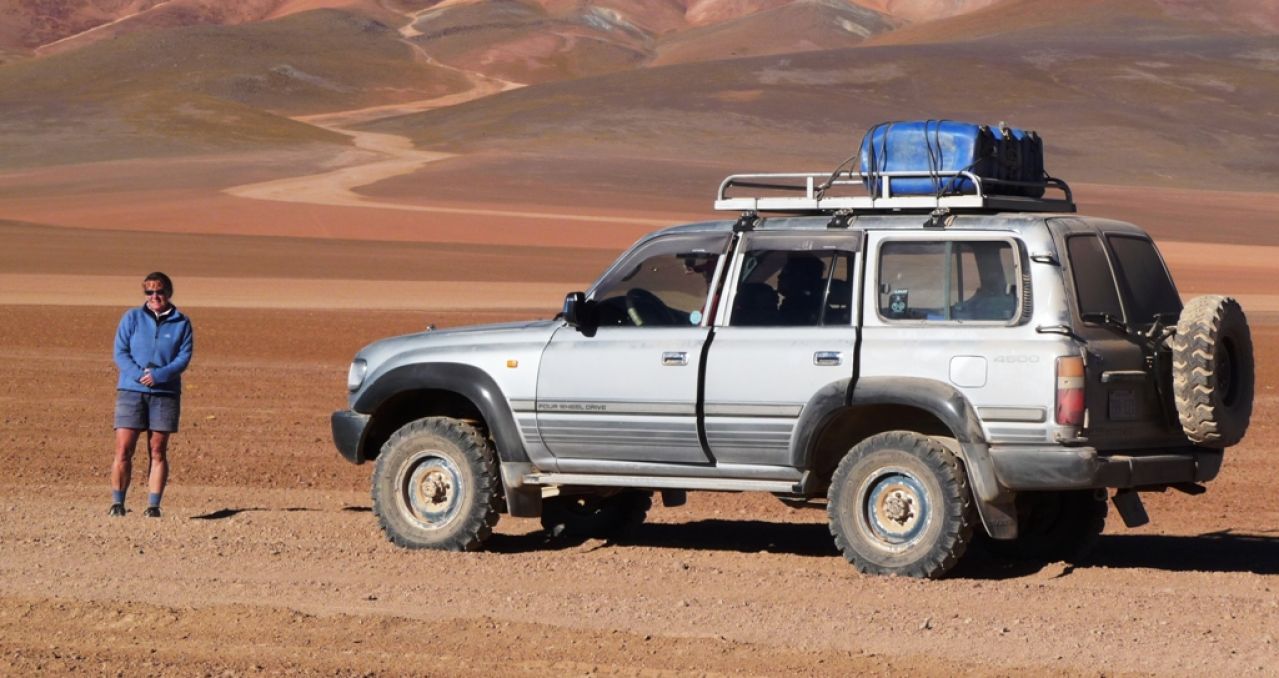
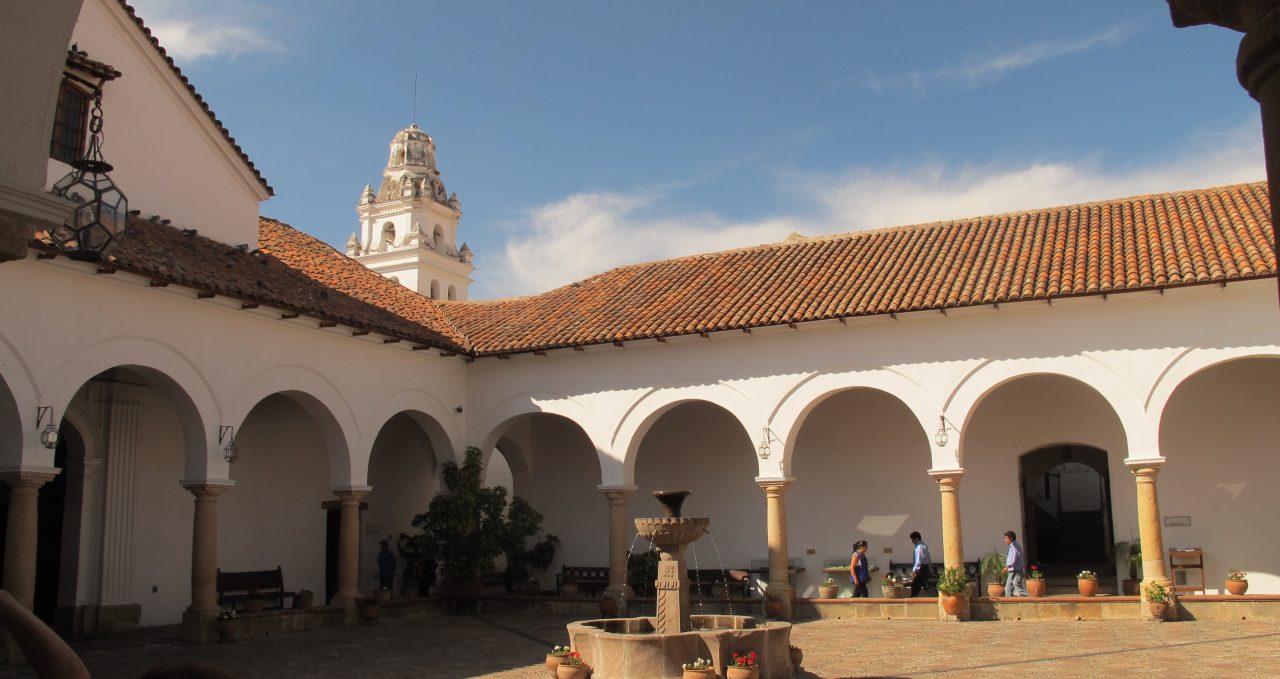
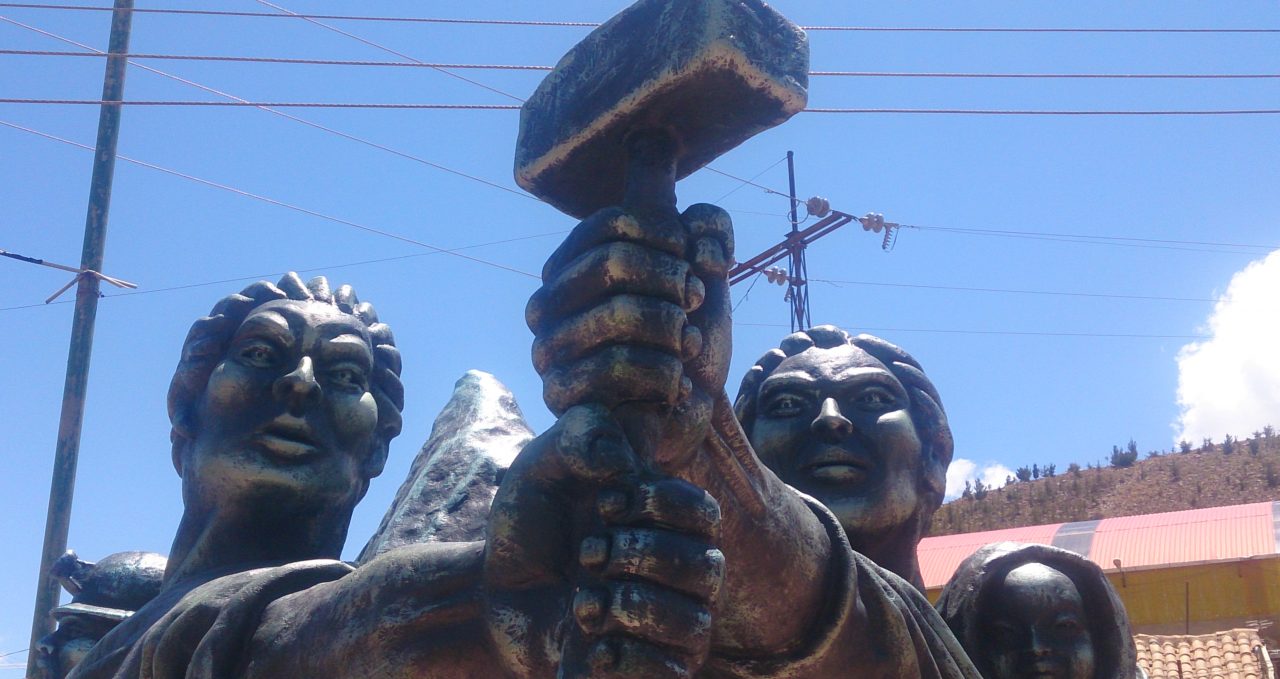
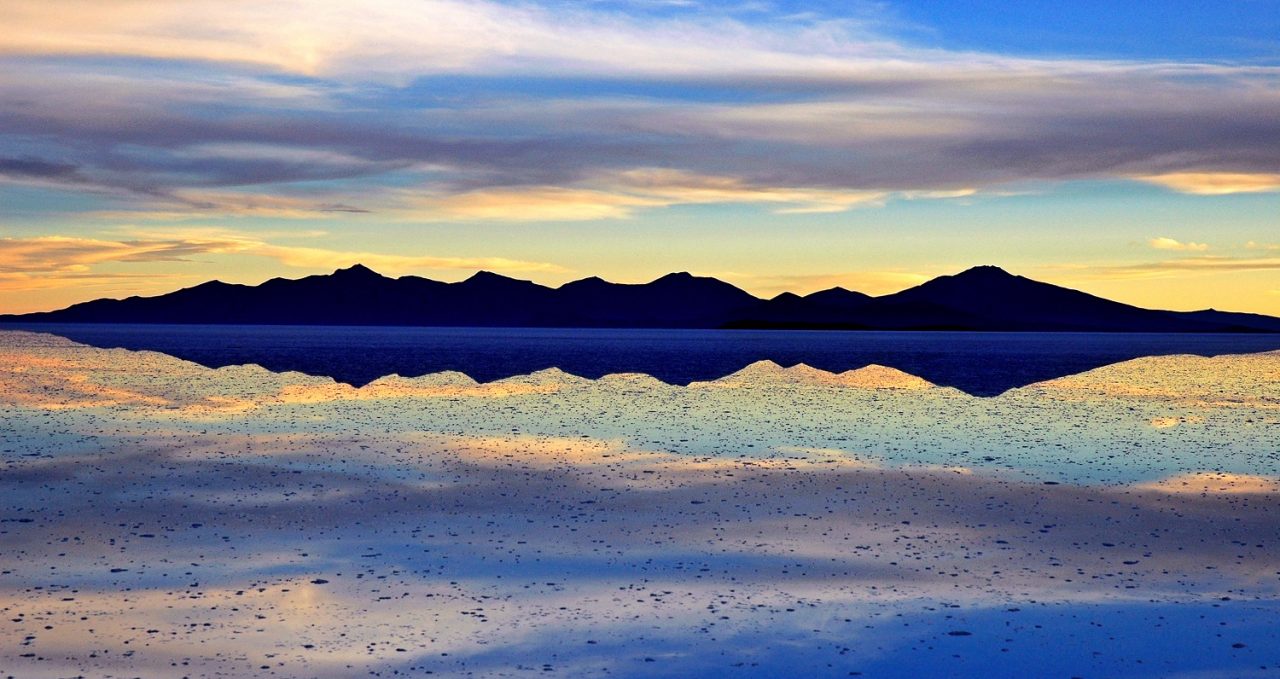
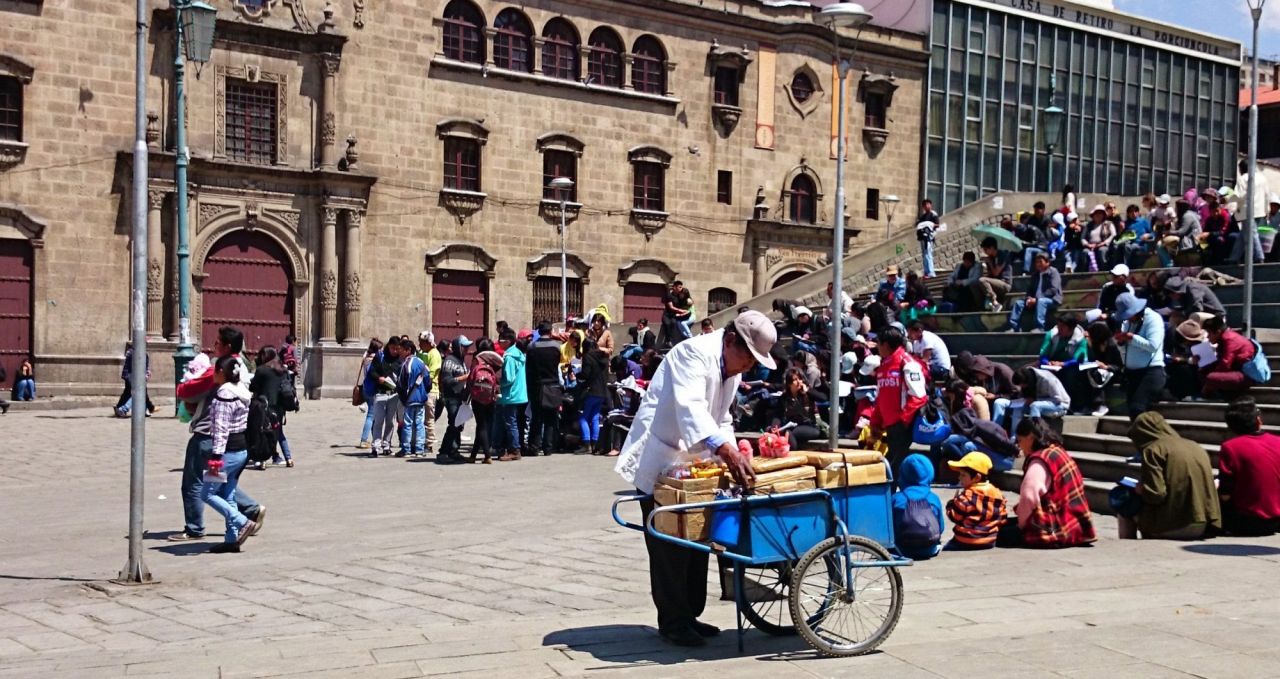
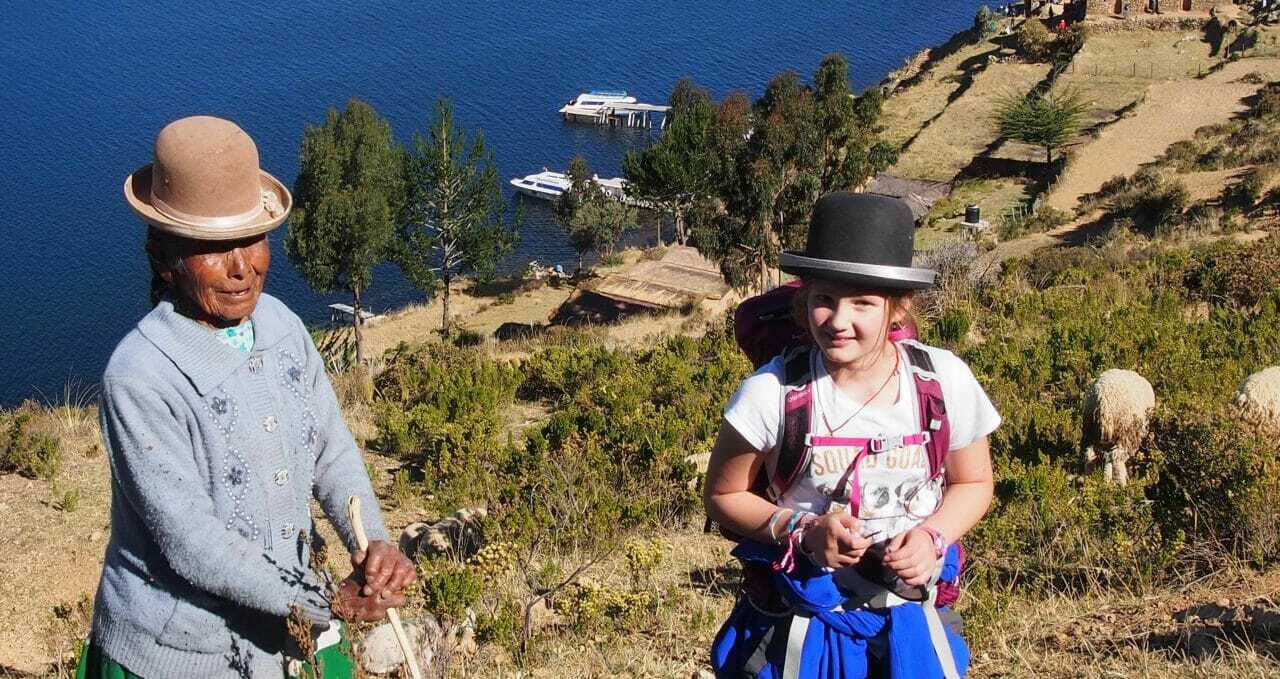
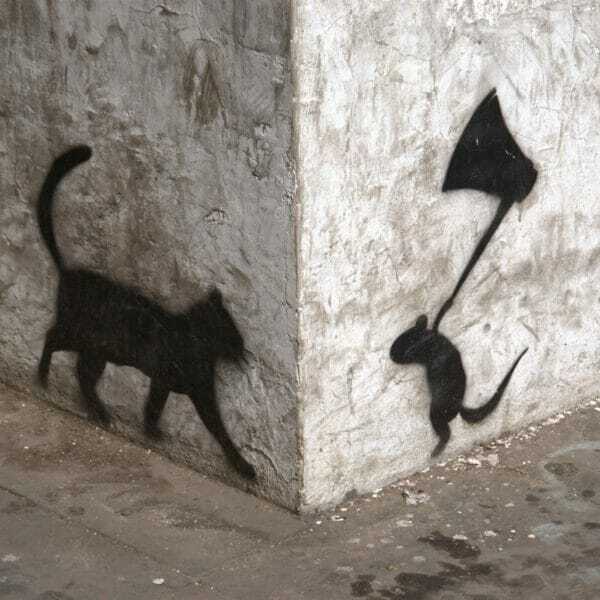
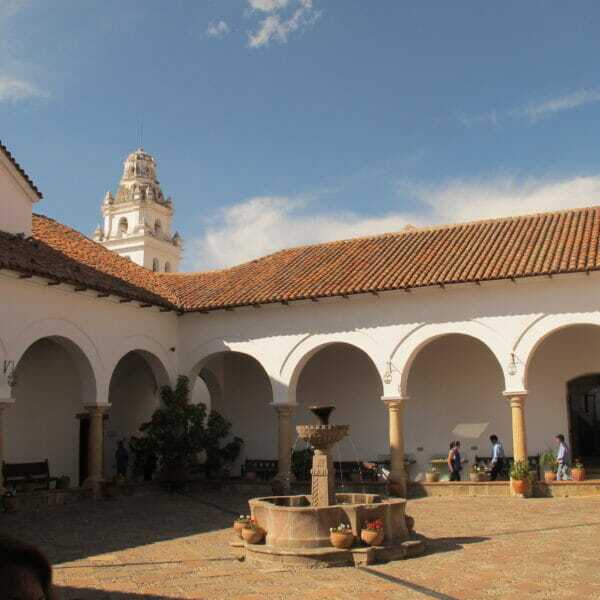
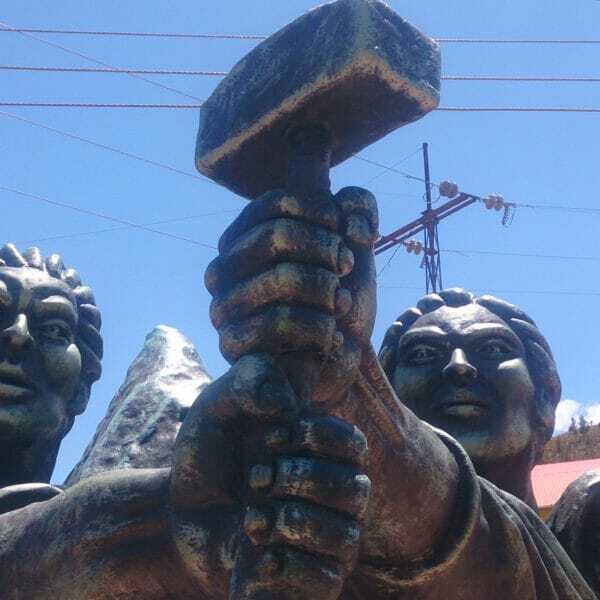
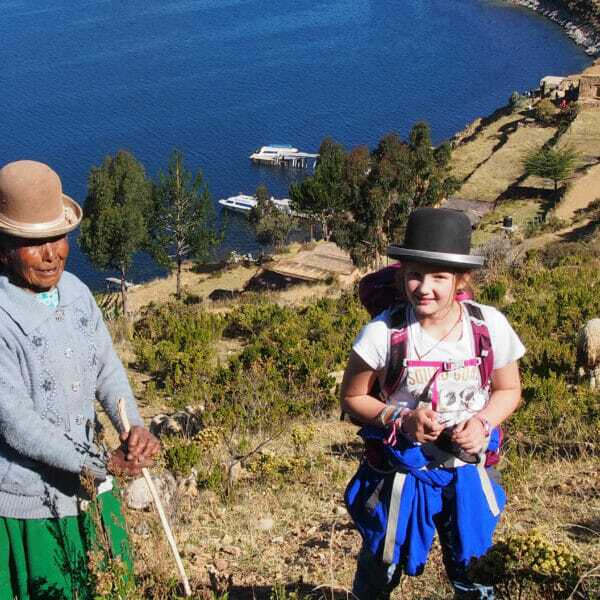
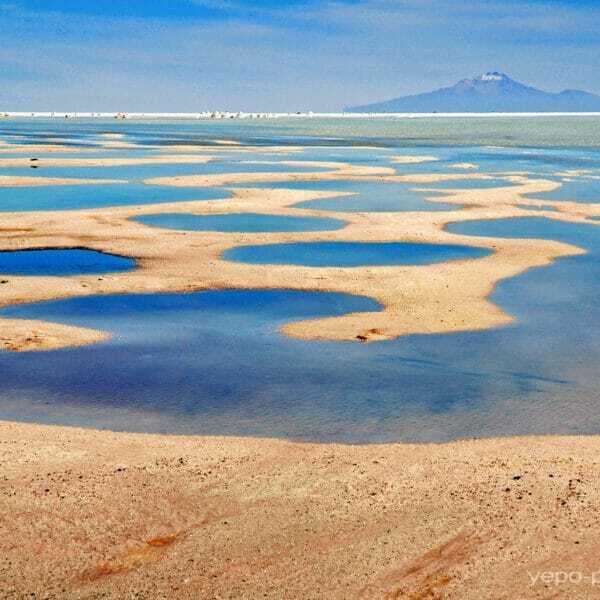
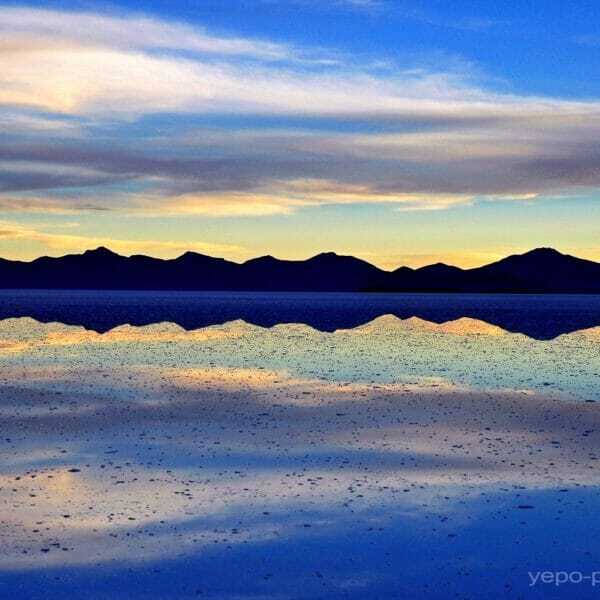
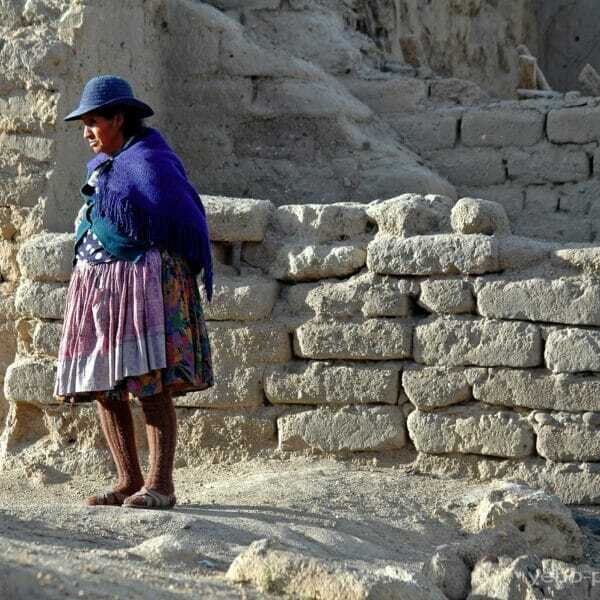
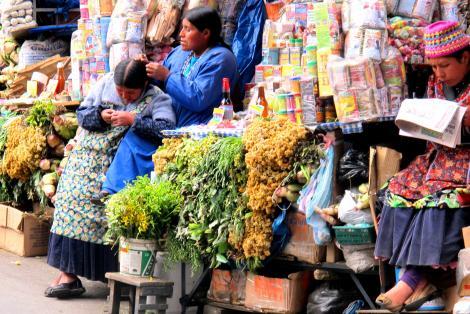
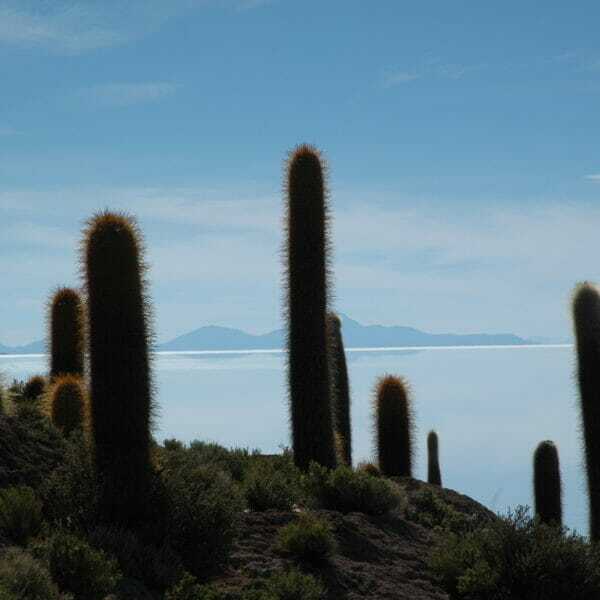
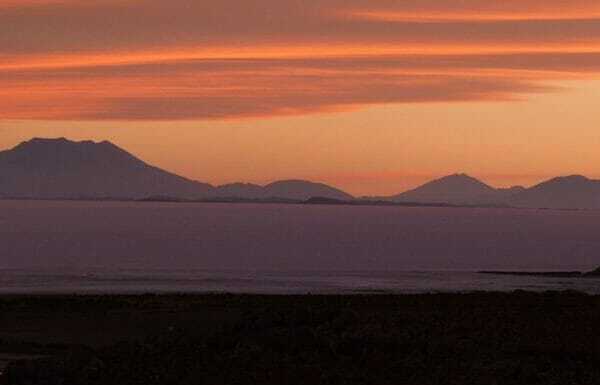
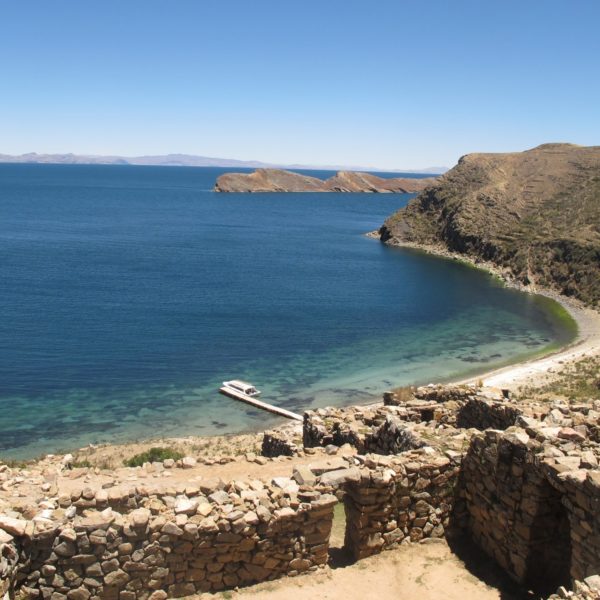
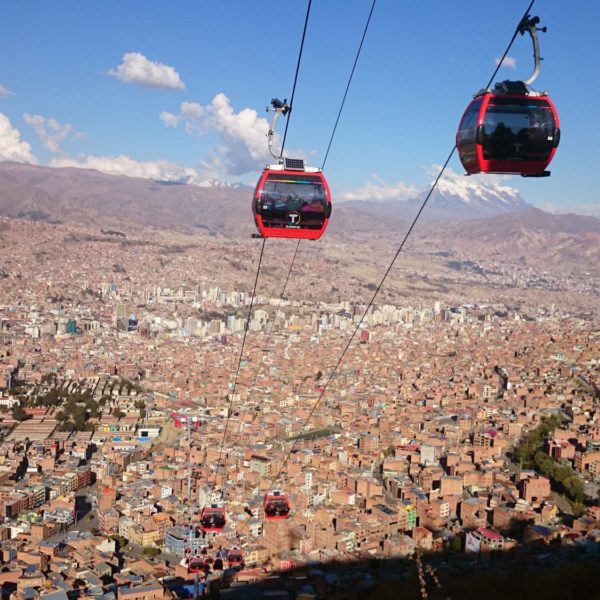
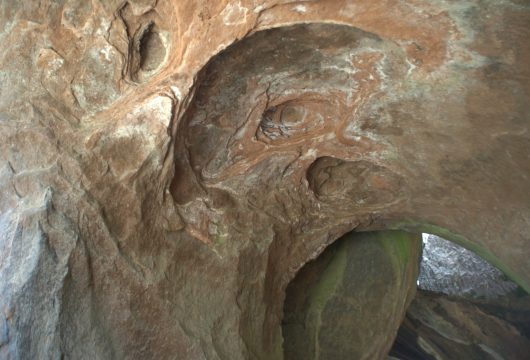
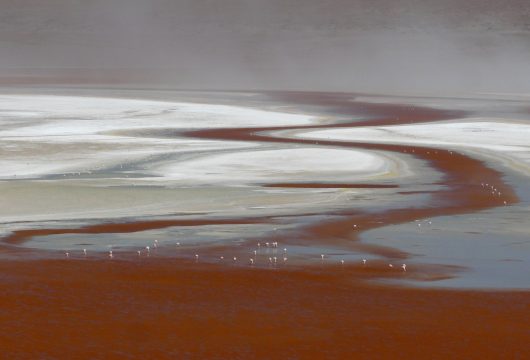
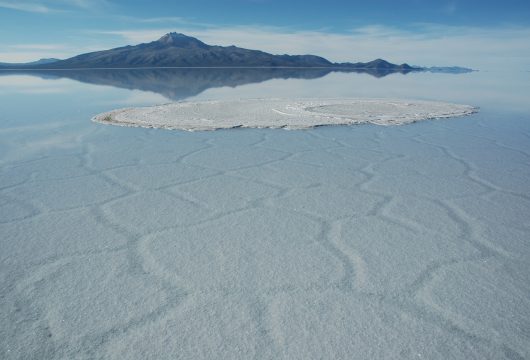
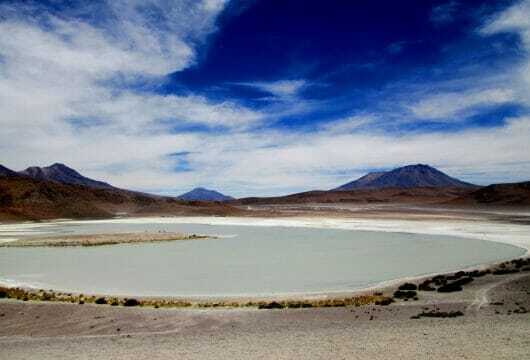
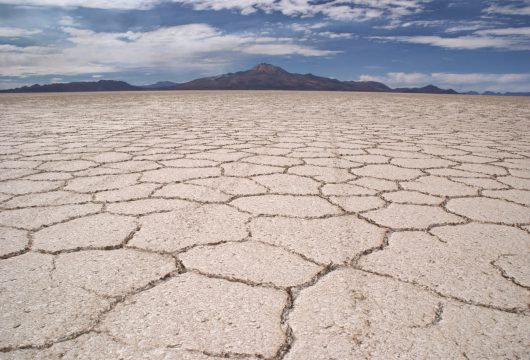
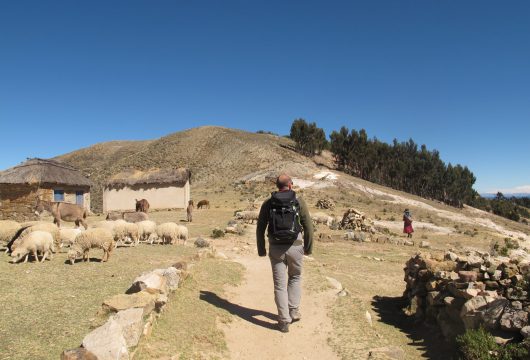
 a Tailor Made Tour
a Tailor Made Tour 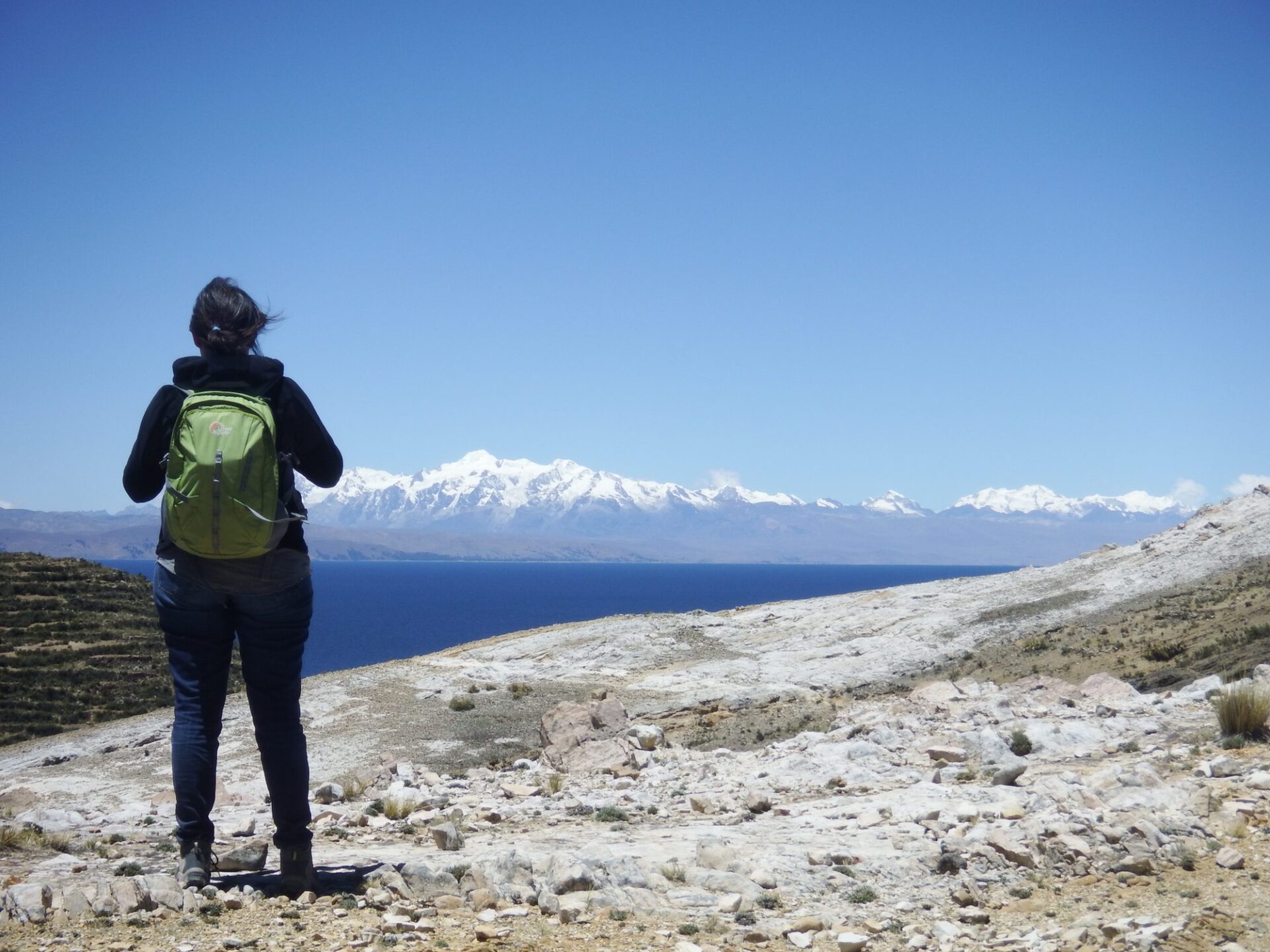

 a Group Tour
a Group Tour 